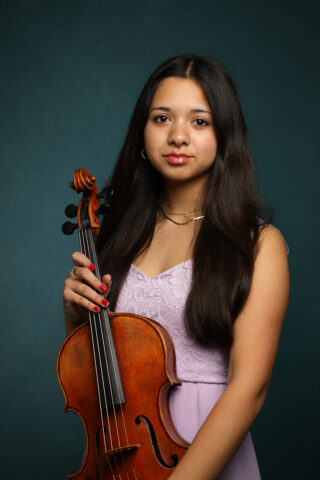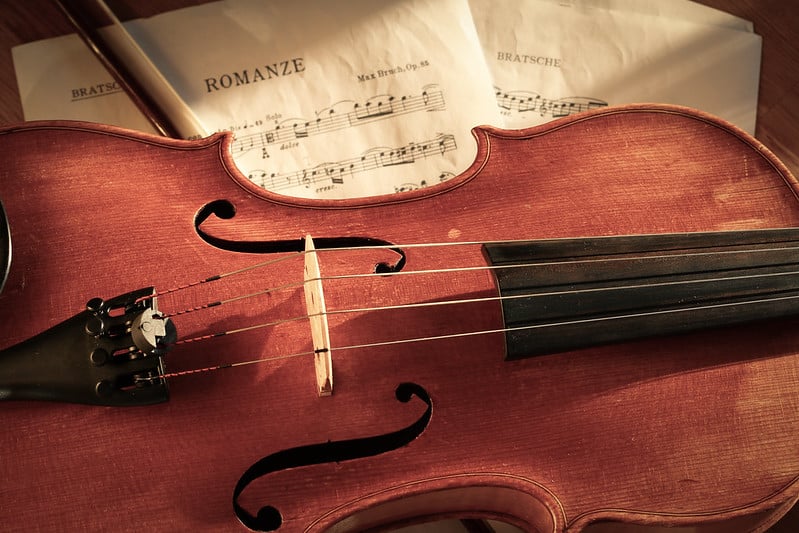In the past year, several CMPI fellows have decided to switch from violin to viola. We were wondering what contributed to their decision-making process and how the transition is going for them. In this article, we will find out a bit about their experiences with the viola.
 Fourteen-year-old Neena Agrawal started playing the viola at age 12 after eight years of violin training. Her family is no stranger to the viola, as her mother played viola in high school and college. Her brother, CMPI violin alumnus Sameer Agrawal, also picked up the viola in middle school, as is typical of most violin students who study at the Music Institute of Chicago Academy.
Fourteen-year-old Neena Agrawal started playing the viola at age 12 after eight years of violin training. Her family is no stranger to the viola, as her mother played viola in high school and college. Her brother, CMPI violin alumnus Sameer Agrawal, also picked up the viola in middle school, as is typical of most violin students who study at the Music Institute of Chicago Academy.
Neena had resisted the viola for a long time – a byproduct of one too many viola jokes from TwoSet Violin – but eventually decided to give it a try. For a year she played both instruments; however, it was hard to switch between the two. She quickly fell in love with the sound of the viola, the viola community, and the viola repertoire. She switched fully at age 13.
Benefits of Playing Viola
One of the best benefits of playing the viola is that violists instantly become very desirable! Almost every program or ensemble is looking for good violists. While violinists are constantly fighting for spots, creating a hyper-competitive atmosphere, violists are always in demand. Neena experienced this when applying to summer camps this year. Not only was she recruited by several programs without even applying, but she also received admission and large scholarships to numerous festivals.
Another benefit of playing the viola is the camaraderie. Without the competitive aspect of violin, violists tend to be much more laid back, welcoming, and congenial. In fact, competitiveness is shunned by the viola community. Violists are always willing to help each other and work together.
Finally, the viola teaches students to understand music in a deeper way. As the inner voice that glues together the melody and bass, the viola is critical in developing an understanding of how music works harmonically and structurally. There is a reason that so many famous composers preferred playing the viola – Bach, Mozart, Beethoven, Dvorak, and Hindemith are just a few.
Easy or Hard?
The biggest worry most people have about switching to the viola is learning to read alto clef. In reality, most students don’t find alto clef that difficult. Neena picked it up in just a few weeks, though she admits that having perfect pitch made the process easier.
On the other hand, many things that seem to be the same on viola as on violin end up being quite tricky. Viola technique is completely different in small but important ways. Developing a true viola sound requires a different approach in bow use, vibrato, and left-hand articulation. Left hand position can be challenging and individualized, especially for smaller violists like Neena. Intonation is much more difficult, as is getting a response out of the string. Most violinists who pick up the viola do not produce a true viola sound for quite some time, as sound production takes many small changes in technique.
Even basic concepts like posture and set-up can be tricky on the viola. Holding up a heavier instrument requires more core, back, and arm strength, and finding exactly the right shoulder rest and chin rest are critical in preventing injury. Neena has already gone through three chinrests, settling on a center-mounted one, as well as several shoulder rests.
Tips for Switching
Here are just a few tips from our CMPI violists when switching from violin to viola:
- Try to study with a violist or at least a violinist with extensive viola experience
- Find the right size viola – don’t start on an instrument that is way too big or hard to play!
- Consider a violin to viola workshop or class – these are often available at summer festivals
- Do not expect technique to be the same as on violin
- Experiment with your set up, especially your chin rest
- Always use a viola bow!
- Listen a lot to help achieve a beautiful viola sound
Give It a Try!
Many area pre-college programs encourage all their violinists to learn a little bit of viola. Not only is it helpful for improving musicianship, but it can provide violinists with a valuable new skill that is often highly in demand. Who knows, you may end up switching, too!
